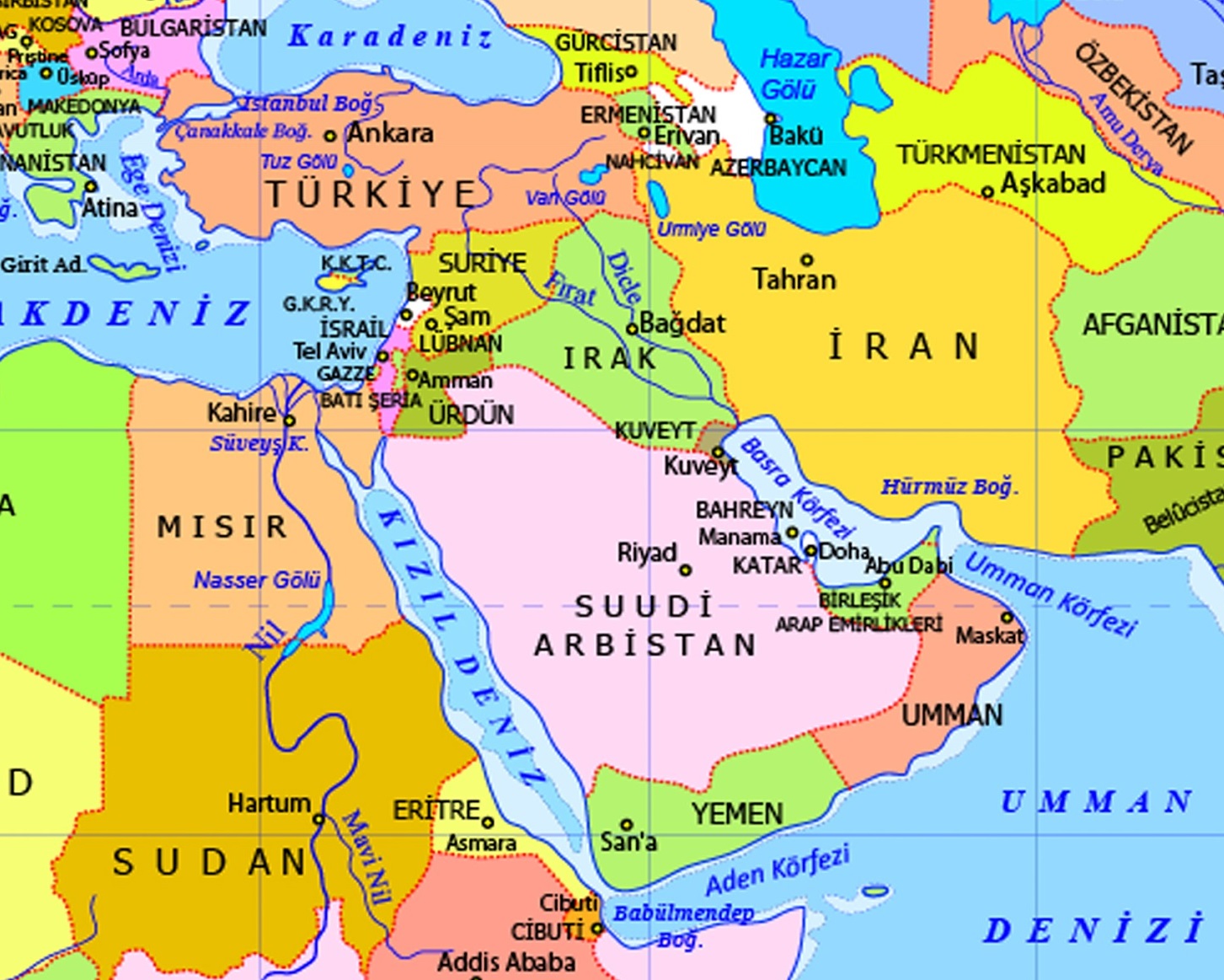Over the past four decades, there have been at least three tectonic shifts in the geopolitics of the Middle East, often referred to as efforts at “changing the map” of the Middle East. In 1982, Israeli Defense Minister Ariel Sharon invaded Lebanon in order to destroy the threat of Yasir Arafat’s Palestine Liberation Organization. In 2003, the Bush administration created the lie that Saddam Hussein had “weapons of mass destruction” in order to invade Iraq. Most recently, Israeli President Benjamin Netanyahu stated explicitly that he would use military force to “change the map” of the Middle East as part of his campaign to annihilate Hamas in the Gaza Strip. The map of the Middle East has not changed, but hundreds of thousands of innocent Arabs have been killed.
In every case, the “day after” was far different and far more threatening than anything that Sharon, Bush, or Netanyahu promised. Military campaigns and occupations that were supposed to last months turned into years. In the cases of Lebanon and Iraq, Israeli and American occupations lasted decades, and after two decades in Iraq there are still several thousand U.S. military troops in vulnerable positions there. The U.S. invasion of Iraq allowed Iran to become the chief outside influence in Baghdad, marking a huge strategic setback for the United States. As for Gaza, Netanyahu promised to make the Strip uninhabitable, and there is no reason to believe at this point that it will ever be habitable for Palestinians.
Ariel Sharon devised a secret plan in 1982 for taking the invasion of Lebanon all the way to Beirut, which he didn’t share with Prime Minister Menachem Begin, who had a nervous breakdown in the wake of the initial invasion and the war crimes that were committed at two refugee camps—Sabra and Shatila. The operation was planned to last several days; Israeli forces formally withdrew from Lebanon 18 years later, and there are still Israeli units in southern Lebanon. The PLO was forced to leave Lebanon and the Middle East, and repaired to North Africa. But the PLO was replaced by a newer and far more threatening force—Hezbollah—with the assistance of Iran’s Revolutionary Guard.
In 2003, President George W. Bush lied his way into a military invasion of Iraq to destroy weapons of mass destruction that Saddam Hussein didn’t possess. The mainstream media, particularly the New York Times, played a key role in repeating the hundreds of lies of the Bush administration. Like Sharon, Bush wanted to “change the map” of the Middle East by introducing democracy in Iraq that would become a model for other Arab states. Vice President Dick Cheney played a major role in favoring the creation of democratic governments, telling the annual convention of the Veterans of Foreign Wars in 2002 that the “freedom-loving peoples of the region” will turn to democratic forms of government.
Oil was also a factor in the partnership between Bush and British Prime Minister Tony Blair who discussed dividing up Iraq’s oil wealth, which was reminiscent of the talks between President Dwight Eisenhower and British Prime Minister Winston Churchill to overthrow the elected government of Mohammed Mossadegh in 1953. The Suez War of 1956 was a huge disaster for the interests of Britain, France, and Israel. The commander of CENTCOM in 2003, General John Abizaid, when asked about Bush’s war, said “of course, it’s about oil.” All of these wars were driven by economic interests.
Netanyahu is proclaiming that his war against Hamas, the attacks on Iran, and the new attacks on Syria will create a “new” Middle East. Israel has been using military force against Syria for the past 12 years, but the mainstream media has paid little attention to this campaign. Netanyahu’s claim of creating a “sterile defense zone” with Syria was simply a case of opportunism, using military force without any indication of the policy that would follow. This has been typical of Israeli use of force since the Six-Day War in 1967 that found Israel with occupied lands, but with no idea of what would come next.
Netanyahu’s answer for all questions about the Gaza War was to stress “changing the face” of the Middle East, which was echoed across much of the American and Israeli press. The Jerusalem Post typically explained “In the past year, Israel has done more for stability in the Middle East than decades of ineffective UN agencies and Western diplomats.” (See the New York Times Magazine, July 27, 2025, “Netanyahu’s War,” for an authoritative account of Netanyahu’s prolonging the war in order to stay in power.)
Trump has not been a direct collaborator in Netanyahu’s efforts, but he campaigned on the promise that the “Middle East is going to get solved.” Trump’s first-term efforts on behalf of Israel made it clear that he would support Netanyahu’s aggressive policies in the region. He emphasized that he had no preference for a two-state or one-state solution, and he recognized Jerusalem as the capital of Israel without getting any concessions from Israel. He cut U.S. aid to UNRWA as well as to various Palestinian aid groups on the West Bank that were hostages to Israeli governments. Finally, he had no problem with the Israeli settlements on the West Bank that previous U.S. administrations and various international organizations had declared illegal.
Trump’s second term is far worse, marked by complicity with Israel’s genocidal campaign, and ignoring the forcible starvation of the Palestinian people. As John Paul, a former State Department official who resigned from the Biden administration, remarked, politicians “cannot admit they have been wrong, ignore the evidence of their eyes, and find some way to avoid facing the truth.” Trump and Netanyahu most recently blamed Hamas for the starvation in Gaza, which Israel’s high-level military commanders denied..
The balance of power in the Middle East is probably more threatening now than at any other time in the post-World War II period because of Israel’s military domination and its easy willingness to use military power. There certainly has been no “sign of stability.” Historically, Israelis have claimed the high moral ground in their confrontations with the Arab states because of the Jewish suffering of the Holocaust.
However, Israel’s genocidal military campaign in Gaza and its ethnic cleansing campaign on the West Bank have contaminated that claim. It has also divided the Western world—including the Jewish diaspora— on the legitimacy of Israel’s self-proclaimed status. The United States had been in position to possibly expand the number of Arab nations in the Abraham Accord, but U.S. influence in the Middle East has declined. The “no war, no peace” situation in the region will continue, and the apartheid reality in Israel will only worsen the geopolitics of the region as it continues to erode Israel’s moral standing.
These three scenarios demonstrate that war will not “change the map” of the Middle East, but rather create more chaos and tragedy. Conversely, there is the example of the way peace and diplomacy did “change the map” of the Middle East. That would be the result of the 13 days of talks at Camp David in 1978 between Israeli and Egyptian leaders Menachem Begin and Anwar Sadat that produced an historic agreement. It meant that Arab states, without Egypt, could not start a war against Israel. That certainly changed the map.
*Melvin A. Goodman is a senior fellow at the Center for International Policy and a professor of government at Johns Hopkins University. A former CIA analyst, Goodman is the author of Failure of Intelligence: The Decline and Fall of the CIA and National Insecurity: The Cost of American Militarism. and A Whistleblower at the CIA. His most recent books are “American Carnage: The Wars of Donald Trump” (Opus Publishing, 2019) and “Containing the National Security State” (Opus Publishing, 2021). Goodman is the national security columnist for counterpunch.org.
Source: https://www.counterpunch.org/2025/07/30/the-sad-history-of-changing-the-map-of-the-middle-east/






